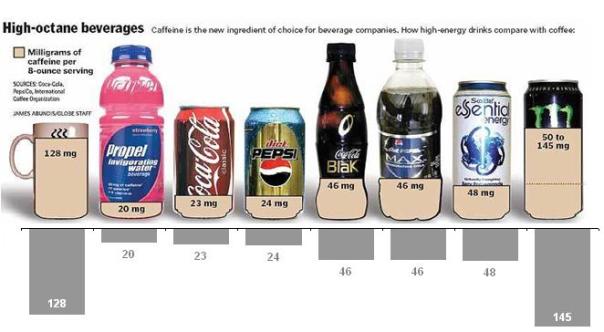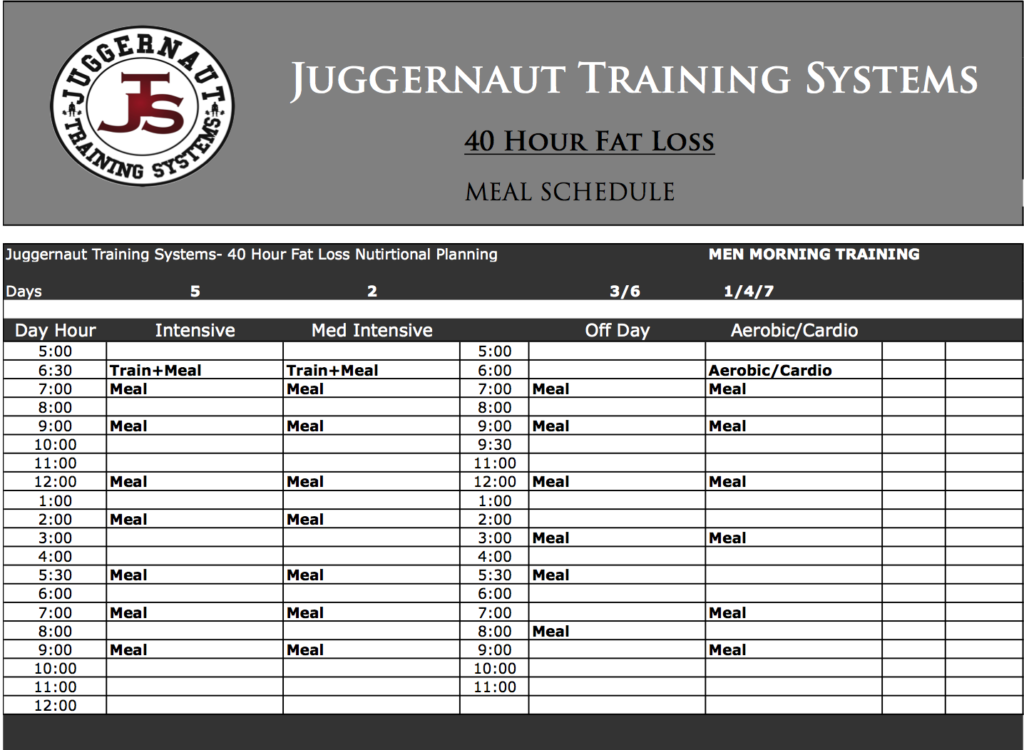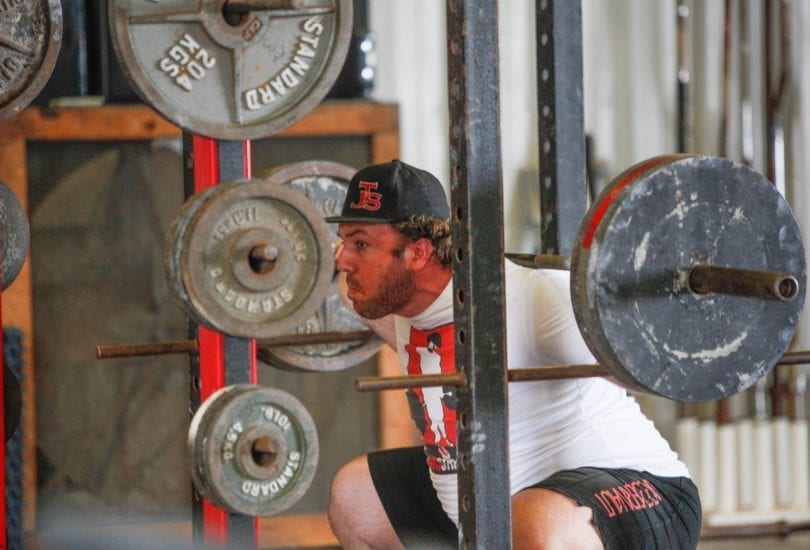Written by Nate Winkler
The wait is over, Part II of Become Your Own Nutrition Coach is finally here. In Part I, we discussed a number of introductory points, ending with the beginning of the Four Pillars I use to create my nutrition programs: Sex, Goals, and Body Type. You must understand where you’re coming from in order to set your future direction, and in this final installment, I’m going to show you the way.
Real World Nutritional Program Development
Adaptation is key for developing realistic programs. One thing I quickly learned early on is that scientific research is conducted in controlled environments, but that’s not life. In the real world, you have relationships, meetings, exams, heart break, and ever decreasing amounts of time to focus on reaching your goals. There’s no way science can replicate the insanity we call ‘life’, but that doesn’t count as an excuse to lift less weight and gain more fat. You have your goals and you’re going to reach them, period. Let’s get to it.
Pillar II: Training
Training matters. I’m sick of these ‘nutritionists’ saying that you can lose weight without training. But what kind of individual, physiologically speaking, are you becoming by abandoning physical exertion? Sure, you can burn fat by avoiding carbs and therefore fuel your daily routine with fats (FFA) only, but for what reason? Without training, you aren’t getting stronger and you aren’t getting more efficient from a cardiovascular, digestive, cognitive, hormonal, or competitive standpoint.
A training program that’s properly structured, based on your goals, training age, and level of physical preparedness (GPP), will allow you to do anything you want to with your body composition. Training elicits a dynamic response from the body that creates an optimal environment/time for the application of specific macronutrient servings. Training/sleep are the backbone for every one of my nutrition plans, regardless of what the goal is. You see, your training intensity/sleep rhythms will establish ‘carb holes’ in your schedule — long periods of time that you can avoid carbohydrates and induce fat loss, without it negatively impacting your performance.

Simplicity & Volume
Juggernaut’s recent Become Unstoppable Seminar assembled the most diverse and accomplished panel of strength athletes ever (seriously). There were multiple world record holding powerlifters, pro strongmen, current USA Weightlifting Champions, Highland Games World Champions, and brilliant coaches that were able to duplicate their success with numerous athletes. Despite the various differences in anatomical structure, event type, and experience there was one common theme throughout every successful training program: simplicity and volume.
If you have a program focused on fat loss you inevitably need to improve your GPP, and the best way to do this is high reps with a few exercises. If your work capacity is low (which is contributing to fat gain in the first place) you don’t need a program centered around variation. Continually changing exercises also invites injury, something you’re much more vulnerable to with diminished work capacity/GPP.
Pick Your Poison
A program focused on fat loss should also emphasize more aerobic activity. Increasing your aerobic capacity inherently reduces your 1-3 rep max effort numbers, so, again, we find ourselves seeing a program with higher volume (8-15 reps/set for fat loss) and more simplicity (less variation in exercises) as the best option. For a longer discussion on this topic, read my article on ‘Why Your Hard Work Is Making You Fatter’.
If you’re wanting to gain weight, by that I mean increase lean muscle mass (who actually wants more fat), aerobic work MUST remain alactic (muscles never ‘burn’). This is done by engaging in interval work where work to rest ratios are at least 1:4. Improving your aerobic capacity will reduce your body weight, and because your goal is mass gain, I assume that’s a bad thing — so avoid ‘going lactic’ at all costs with your conditioning.
High volume lifting (5-10 reps/set) also induces hypertrophy (muscle growth), and by focusing on simplicity, you’ll get better and better at the few most important lifts (squat, bench, deadlift, pull-ups, dips, military) rather than PR-ing on the calf raise machine. Again, simplicity reduces injury and will allow you to recover more quickly. Training is catabolic (muscle breakdown) anyway, you don’t need a variation based program getting in the way of your tissue building. If you want more information on this topic, consult, Chad Wesley Smith, and Brandon Lilly — they’re clearly experts at developing programs for mass gain.
Bands, chains, and boards exist for a reason — they work. The debate isn’t if these advanced stimuli have the ability to improve your numbers, the question is: are they appropriate/necessary for your current training age? My guess is no, and my suggestion is to leave these training aids for a day when you’re at the apex of YOUR potential performance pyramid rather than the base.
Finally, and most importantly for nutritional considerations, training is the best time to consume/metabolize carbohydrates. Your daily (by that I mean 24 hour period, not necessarily ‘Monday’) carbohydrate consumption should mirror your training intensity. For fat loss, if your training is resistance based, consume more carbs, if it’s aerobic based, skip the carbs and your body will fuel itself with fat. Your training intensity will also dictate your body’s internal (metabolic/hormonal) environment and has a number of positive short term and long term affects — more on these implications later.
Pillar III: Schedule & Stress
You have two schedules, the one you plan on having and one that actually occurs. When people say they don’t have time for something, what they actually mean is ‘it’s not a priority right now for me’. I get it, after moving closer to my family, working two jobs, and getting married, training/nutrition took a back seat in my life for the first time. I found out that time is the only thing in this world we can’t get more of, and training/nutrition weren’t going to be a part of my life unless I made them priorities and reassessed my schedule.
Own Your Schedule
Improving your body composition and performance aren’t the only things that matter in life, but they are still important. For busy people, the keys to success are this: cooking in bulk and training at the optimal time in YOUR day. Every Sunday night, I prepare all my family’s meat and vegetables for the week, this allows us to have home cooked, gourmet meals within 90 seconds, every meal, every day.
I must train in the morning, if I don’t, then it’s not going to happen. But your not me and it’s unrealistic for anyone to make statements like: ‘Train at XX:00, or else!’— programs that require people to train at specific times are inherently flawed. Upon waking, parents have more to do in their first two hours than most do all day long. I’m not about to tell a father of two, who’s hanging on for dear life, that he needs to get up at 4:30am now instead of 6:00am. Training/meal prep doesn’t have to be stressful and should work with your schedule — you can adapt your macronutrient servings accordingly to reach your goals.

Consolidating Stressors
Managing and mitigating your stress needs to be a primary focus of your new plan. Chad Smith wrote a great article on consolidating your training stressors, but I’m not talking about those — I’m talking about ‘life’. Bills, holidays, travel, kids, Obamacare, etc. can bury you beneath a mountain of anxiety, each stressor inducing fat gain and reducing performance (work, training, romance). You can’t get rid of stress, but you can reduce it’s ability to derail your entire day.
Early morning exercise is a great way to combat stress, for numerous reasons training in the early part of the day will reduce your body’s negative response to stress. Reducing daily caffeine intake and creating a calm training environment (via music/atmosphere) will reduce adrenal fatigue that is characteristic in over-stressed individuals. You don’t need caffeine every morning (to the extent we’ve gone) and you don’t need to ‘get jacked’ for a set of 5 reps. Be intentional about living peacefully.
Recently, I’ve been taking 5-7 minutes to do a few breathing exercises Ryan Brown showed me at the Become Unstoppable seminar. These kind of breathing exercises and activities like yoga are a very effective means of stress reduction. Avoiding stress is futile, but the body can learn to handle it better, this improves body composition and performance — everywhere.
Pillar IV: Menu Choices
All that background was necessary to get us to the actual point of Becoming Your Own Nutrition Coach: correctly choosing what to eat, on your own. All the pieces are in place, we know that your goals, training, and sleep, are going to determine your menu choices.
If your main goal is fat loss, you must program 24-60 hour periods into your week that do not require glycogen, i.e. high rep, lower intensity, interval aerobic training. If you can avoid carbs for a day, up to 2.5 days at a time, you open the possibility for substantial fat (FFA) usage in the metabolic processes. But don’t abandon heavy resistance training or carbs for too long, just prepare your nutrition (marco serving) accordingly.
The two example meal schedules illustrate a training split (AM/PM training) for someone emphasizing fat loss (>25% BF). They are exercising 5 days/week, but only 2 days have them resistance training. The aerobic days do not require carbohydrates, as this activity does not place as high a demand on the glycolytic pathway (explosive movements) or muscular/neural coordination.
In the ‘PM Training’ situation, a carbohydrate serving that mirrors that day’s intensity would be consumed at lunch and during the workout. For ‘AM Training’ schedules, carbohydrate consumption would occur the night BEFORE that session and would mirror the following morning’s intensity (carbs would also be consumed during workout). Do you need this many meals in your day to be successful, not at all. Sometimes, fewer meals are better (and some of these meals would end up being 15 almonds + water/tea).
Early in the day, avoid carbs while consuming calories. If your program has you resistance training more often, consume carbs more often throughout your week. It’s that simple.
Post workout carb serving is determined by YOUR goal, if you need to burn body fat, avoid carbs, if you want to gain lean mass, then consume 40-50% of your bodyweight in grams of carbohydrates (if you weigh 200lbs, consume 80-100g of carbs). This conversation is extremely deep and will be discussed in further detail in my book, 40 Hour Fat Loss, set to release on January 7th, 2014. To learn more about carbohydrate serving/logic, read Explosive Nutrition Part I and Part II.
Successful nutrition programs are littered with vegetables, fats, and proteins. Vegetables curb hunger, improve absorption (you actually use the food you eat), and create insulin stability. Fats and proteins are dense from a caloric standpoint and do not induce an insulin response like carbohydrates do. With any plan, I aim to ‘reset’ the insulin response by planning fewer, more concentrated carbohydrate servings. Having only one carb serving in a day doesn’t mean that you can’t get your daily recommended carb (grams) serving, but it does prevent insulin from being present in your blood stream 16 hours/day.
Taking Control
Recall our discussion from Become Your Own Nutrition Coach:Part I. Your sex, goals, and body type will identify what your strategy needs to be. If you’re 100lbs. over weight, you don’t need to worry about a 1RM, you need to improve your aerobic/work capacity and rectify the insulin resistance that’s causing all that fat gain. Conversely, if you’re lean and ‘stuck’ at a certain weight, get off the treadmill, get under the bar, move some weight, and start eating more carbs. For both goals, calories don’t matter, just eat a lot of what you’re supposed to at the right time — your body will take care of the rest. It’s that simple.







